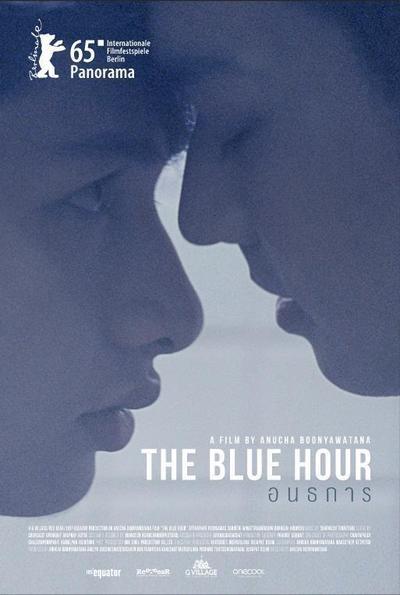
Now streaming on:
Coincidentally, Anucha Boonyawatana’s “The Blue Hour” opens a run at the Museum of Modern Art in a week when two other films playing in New York remind us of the different connotations its color-coded titular adjective has had. Andy Warhol’s “Blue Movie” (1968), being shown at the Whitney Museum, recalls a time when “blue” meant erotic, naughty, titillating. Meanwhile, “Born to Be Blue,” the new, Ethan Hawke film about tragic jazz great Chet Baker, gives us the same hue as a synonym for beat, down, melancholic.
It’s interesting that one of these meanings evokes the eye, cinema and pleasure, while the other relates to the ear, music and pain. But which of them fits “The Blue Hour”? Take your pick. Perhaps the most striking and noteworthy thing about this independent Thai film is that it intertwines the two meanings so deftly and completely. In so doing, it reminds us that while films in the West usually present sexual pleasure as primarily a bodily function and a (temporary) flight from death, in Asian cinema the same phenomenon often has a spiritual dimension that connects with, rather than flees, mortality.
The story here opens at a place and time that also evoke that crucial color. At a rundown, abandoned swimming pool, in the bluish light of dusk, two boys who look about high-school age find each other, apparently having arranged the rendezvous on the Internet. Tam (Attaphan Poonsawas), the younger and prettier of the two, arrives bearing the scars of beatings by school bullies who presumably despise him for being gay. Initially he seems a bit hesitant at the appearance of the more masculine and confidant Phum (Oabnithi Wiwattanawarang), who could be another assailant. But the two boys have come here for the same thing, and they are soon groping their way through their first (clothed and non-explicit) sexual encounter.
Thereafter, they strip down to their undershorts and plunge into the enveloping blueness of that derelict swimming pool. The action evokes baptism, rebirth, the safety of the womb and a range of other possible associations, but its main function is to unite the boys in their own world-away-from-the-world. Boonyawatana shows them looking up from underneath the water, and gives us POV shots of the world above. In real life, of course, filthy water like this would be the ticket to a variety of eye ailments, but here we’re meant to focus on the sensory wonderment and romantic connection.
Other, more malevolent forces soon intrude on the initial idyll, and that’s much to the film’s credit. While “The Blue Hour” opens in a way suggesting a typical gay coming-of-age tale, it quickly veers away from conventional formulas and expectations by using that genre to springboard into different and much darker ones.
Those would be family psychodrama, ghost story and crime drama. At home, Tam has a fraught relationship with a mother (Daungji Hirunsri) who sternly disapproves of his homosexuality but never entirely withdraws her love. There’s mention of a father who also disapproves and a brother who has criminal connections. With the bullies at school and these antagonisms at home, Tam seems besieged from all sides, but his new love proves to be reliable ally as well as a means of entering other, stranger realms.
On a motorcycle that Phum borrows, the boys leave the city and visit a garbage dump on land that Phum says his family owns and that still could provide them a fortune. But now the place is a morbid nightmare realm out of Charles Dickens by way of David Cronenberg. It seems to conjure all of the demons buried in Tam’s psyche, even as it turns up guns, corpses, criminal activity linked to Tam’s brother, and ghosts that connect back to certain unquiet spirits sensed at that ramshackle swimming pool, to which the film eventually returns.
Given all of the elements just described, plus its beautifully muted cinematography, “The Blue Hour” owes certain obvious debts to Apichatpong Weerasethasekul (whose terrific “Cemetery of Splendor” is currently in U.S. cinemas), as do many contemporary Thai films. But Boonyawatana provides a confident and distinctive vision of his own in this, his debut feature. While his spiraling from one genre to another may produce a final lack of coherence, it’s a nervy, purposeful strategy that keeps clichés at bay while engaging viewer interest throughout. Ultimately this “blue” film fuses the erotic and the melancholic, the fleshly and the psychic, in ways striking and memorable.
Godfrey Cheshire is a film critic, journalist and filmmaker based in New York City. He has written for The New York Times, Variety, Film Comment, The Village Voice, Interview, Cineaste and other publications.






97 minutes
Atthaphan Poonsawas as Tam
Oabnithi Wiwattanawarang as Phum
Duangjai Hirunsri as Mother
Panutchai Kittisatima as Tam's brother
Nithiroj Simkamtom as Father